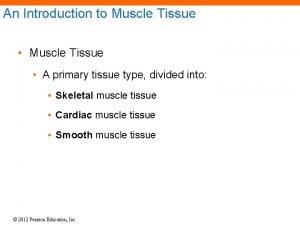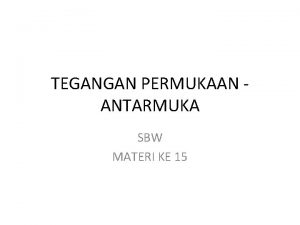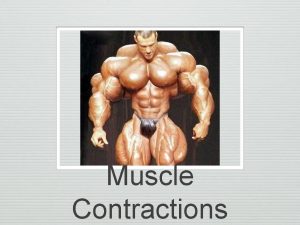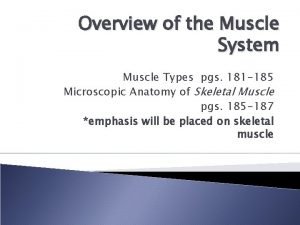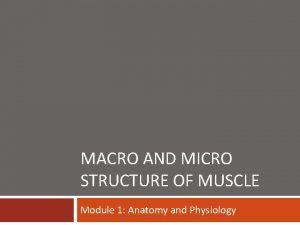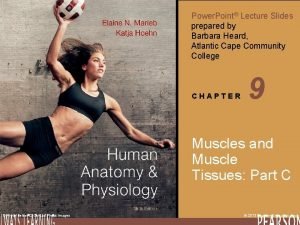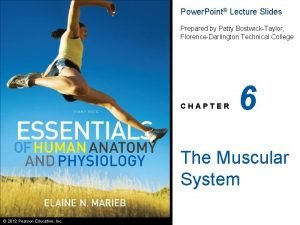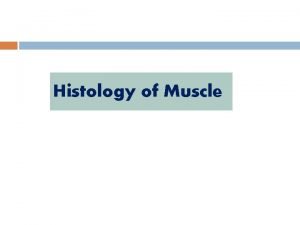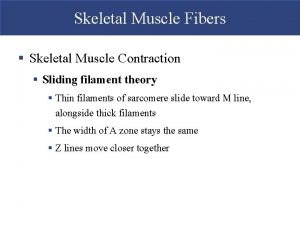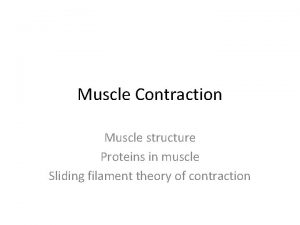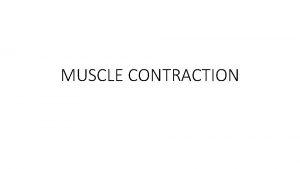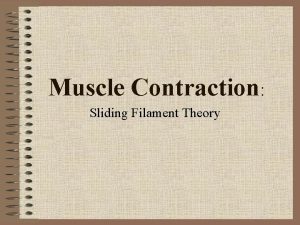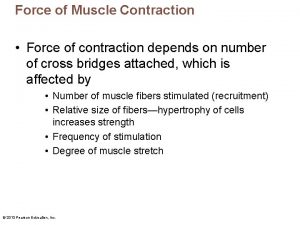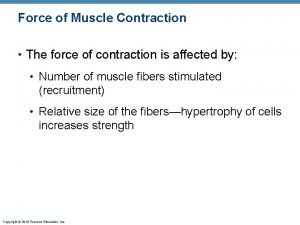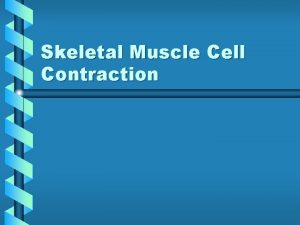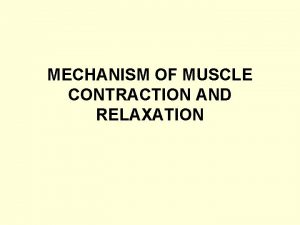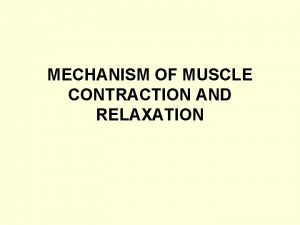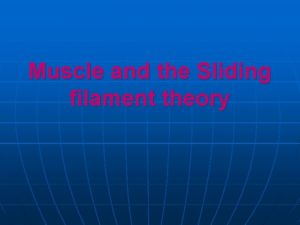Skeletal muscle contraction Contraction force and tension Sliding












- Slides: 12

Skeletal muscle contraction • • Contraction, force and tension Sliding Filament Theory of Contraction cycle Regulation of the contraction cycle

Muscle contraction • Movement or resist a load (force) • Load is the weight or force that opposes the contraction of a muscle • Tension is the force created by a muscle • Need ATP to generate tension

Observations during muscle contraction Muscle shortens when it moves a load. (When muscle contracts, it does not always shorten)

Observations during muscle contraction: A band does not shorten during contraction.

Sliding filament theory of contraction: movement and force Resting length How about force without movement?

During contraction • • • Z discs move closer together Sarcomere shortens A band same length I band reduced H band reduced

What pushes the actin filaments into the myosin? • Cross-bridges link myosin to actin • Power stroke: myosin head binds to actin myosin head release actin. Repeated many times. • Myosin molecules are flexible • ATP causes movement of myosin molecules

Myosin • A motor protein • Converts chemical bond energy of ATP to mechanical energy of motion • Each myosin as ATPase • Energy from ATP hydrolysis is stored as potential energy in the myosin molecule, and is used to create the power stroke.


Why don’t actin and myosin continuously bind together? • ATP is usually available • Actin’s binding site for myosin is revealed only during cross-bridge (binding). • During relaxation, actin’s binding site for myosin is concealed


 Smooth muscle contraction
Smooth muscle contraction Terminal cisterna
Terminal cisterna Spin coat
Spin coat Transference in psychology
Transference in psychology Tegangan permukaan zat cair
Tegangan permukaan zat cair Atp and muscle contraction
Atp and muscle contraction Comparison of skeletal cardiac and smooth muscle
Comparison of skeletal cardiac and smooth muscle Characteristics of skeletal smooth and cardiac muscle
Characteristics of skeletal smooth and cardiac muscle Micro and macro structure of skeletal muscle
Micro and macro structure of skeletal muscle Comparison of skeletal cardiac and smooth muscle
Comparison of skeletal cardiac and smooth muscle Comparison of skeletal cardiac and smooth muscle
Comparison of skeletal cardiac and smooth muscle Characteristics of skeletal smooth and cardiac muscle
Characteristics of skeletal smooth and cardiac muscle Cardiac muscle tissue
Cardiac muscle tissue

